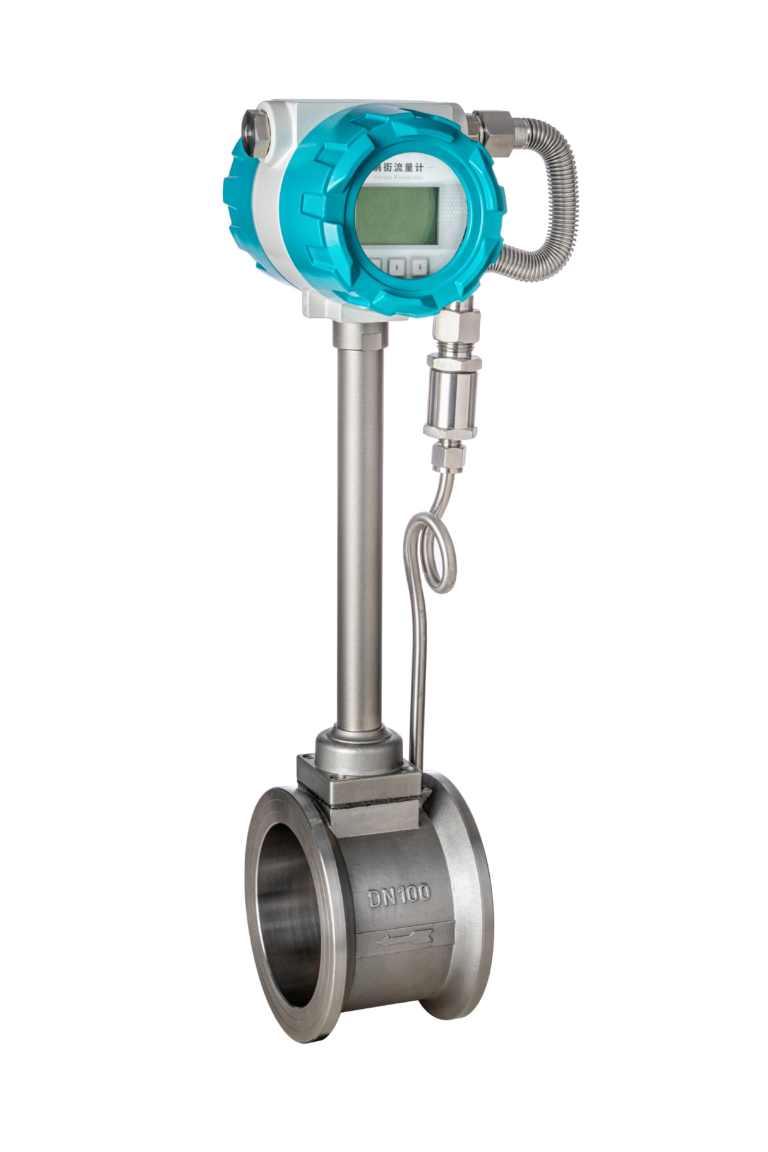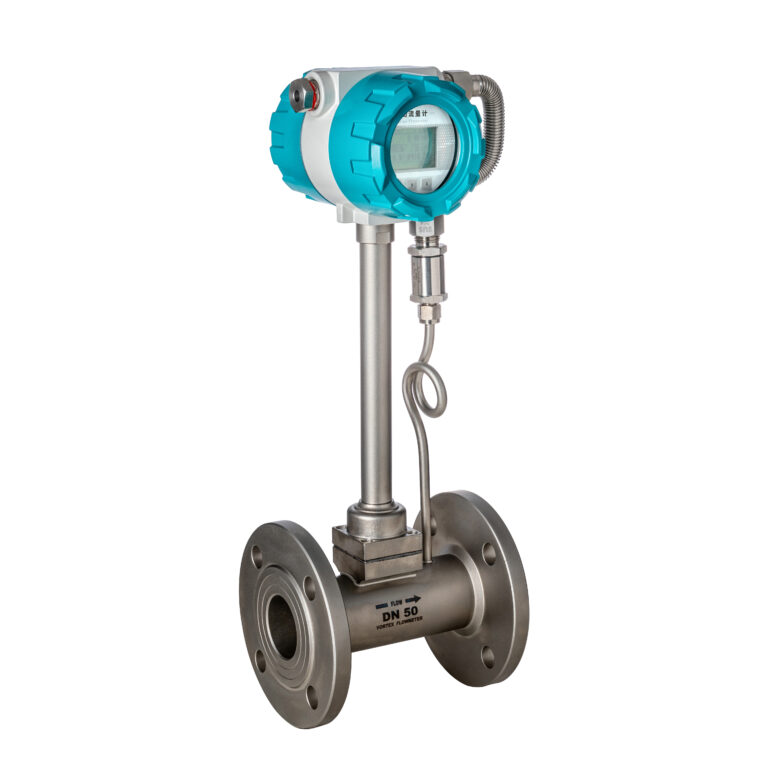Calibration is a vital process in ensuring the accuracy and reliability of vortex flow meters. This procedure involves comparing the meter’s readings to a known standard and making adjustments to minimize errors. A systematic calibration process ensures compliance with industry standards and maintains optimal performance. This article outlines the detailed procedure for calibrating vortex flow meters.
Overview of Calibration
Calibration verifies the performance of a vortex flow meter by evaluating its measurement accuracy under controlled conditions. The procedure typically involves:
Setting up the calibration environment.
Conducting tests at various flow rates.
Adjusting the flow meter, if necessary, to align with the standard.
Documenting the results for traceability and compliance.

Step-by-Step Calibration Procedure
1. Pre-Calibration Preparation
Before beginning the calibration process, ensure the following:
Visual Inspection: Conduct a thorough visual inspection to verify that the flow meter is free of physical damage, wear, or debris.
System Cleanliness: Ensure that the calibration system, including the piping and fluid, is clean and free of contaminants.
Equipment Check: Verify the calibration equipment’s accuracy and traceability to national or international standards.
Environmental Conditions: Confirm that the temperature, pressure, and other environmental factors are stable and within the meter’s operating range.
2. Calibration Setup
Install the Flow Meter: Install the vortex flow meter in the calibration setup, ensuring proper alignment and orientation per the manufacturer’s guidelines.
Configure the Calibration Standard: Set up the reference standard, such as a master flow meter, prover system, or gravimetric system, and confirm its accuracy.
Connect Signal Outputs: Connect the flow meter’s signal output to the calibration monitoring system.
3. Initial Zero Check
Verify Zero Flow: Ensure that the flow meter shows zero output when no fluid is flowing through the system.
Adjust Zero Setting: If the output deviates, adjust the zero setting according to the manufacturer’s instructions.
4. Flow Rate Testing
Select Test Points: Identify test points across the flow meter’s operational range, including minimum, intermediate, and maximum flow rates.
Stabilize Flow: At each test point, allow the flow to stabilize before recording measurements.
Record Readings: Capture readings from both the vortex flow meter and the reference standard.
Repeat Measurements: Perform multiple measurements at each test point to ensure repeatability and reliability.

5. Comparison and Adjustment
Calculate Errors: Compare the readings from the vortex flow meter to the reference standard and calculate the deviation.
Adjust Calibration: If the deviation exceeds acceptable limits, adjust the flow meter settings to minimize errors. This may involve modifying the scaling factor or flow coefficients.
Re-Test: After adjustments, re-test the flow meter at all test points to confirm improved accuracy.
6. Post-Calibration Checks
Verify Stability: Ensure that the flow meter’s readings remain consistent and stable over time.
Check Outputs: Confirm that the output signals, such as analog or digital readings, match the calibration results.
7. Documentation
Record Results: Document all calibration data, including test points, readings, adjustments, and environmental conditions.
Generate Calibration Report: Create a detailed calibration report for traceability and compliance with industry standards.
Update Records: Update the flow meter’s calibration history and schedule the next calibration.
Best Practices for Calibration
Follow Manufacturer Guidelines: Always refer to the manufacturer’s instructions for specific calibration procedures and settings.
Use Certified Standards: Ensure that all reference standards are certified and traceable to recognized bodies such as ISO or NIST.
Maintain Cleanliness: Prevent contamination in the calibration system to avoid errors.
Train Personnel: Ensure that calibration is performed by trained and qualified technicians.
Regular Calibration: Schedule regular calibration intervals based on the meter’s application and operating conditions.

Common Challenges and Solutions
Environmental Fluctuations: Minimize temperature and pressure variations by using controlled calibration environments.
Signal Interference: Use proper grounding and shielded cables to reduce electromagnetic interference.
Flow Disturbances: Ensure adequate straight pipe lengths and avoid flow obstructions in the calibration setup.
Conclusion
A well-executed calibration procedure ensures that vortex flow meters provide accurate and reliable measurements. By adhering to the outlined steps, best practices, and manufacturer guidelines, organizations can enhance the performance of their flow meters, ensure compliance with industry standards, and optimize process efficiency.
